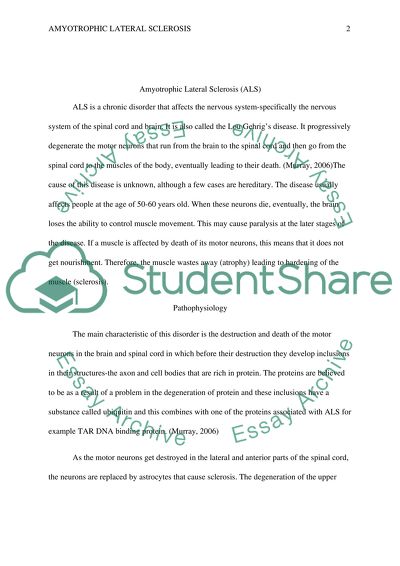Cite this document
(“ALS (amyotrophic lateral sclerosis) Term Paper Example | Topics and Well Written Essays - 1500 words”, n.d.)
ALS (amyotrophic lateral sclerosis) Term Paper Example | Topics and Well Written Essays - 1500 words. Retrieved from https://studentshare.org/nursing/1689606-als-amyotrophic-lateral-sclerosis
ALS (amyotrophic lateral sclerosis) Term Paper Example | Topics and Well Written Essays - 1500 words. Retrieved from https://studentshare.org/nursing/1689606-als-amyotrophic-lateral-sclerosis
(ALS (amyotrophic Lateral Sclerosis) Term Paper Example | Topics and Well Written Essays - 1500 Words)
ALS (amyotrophic Lateral Sclerosis) Term Paper Example | Topics and Well Written Essays - 1500 Words. https://studentshare.org/nursing/1689606-als-amyotrophic-lateral-sclerosis.
ALS (amyotrophic Lateral Sclerosis) Term Paper Example | Topics and Well Written Essays - 1500 Words. https://studentshare.org/nursing/1689606-als-amyotrophic-lateral-sclerosis.
“ALS (amyotrophic Lateral Sclerosis) Term Paper Example | Topics and Well Written Essays - 1500 Words”, n.d. https://studentshare.org/nursing/1689606-als-amyotrophic-lateral-sclerosis.


